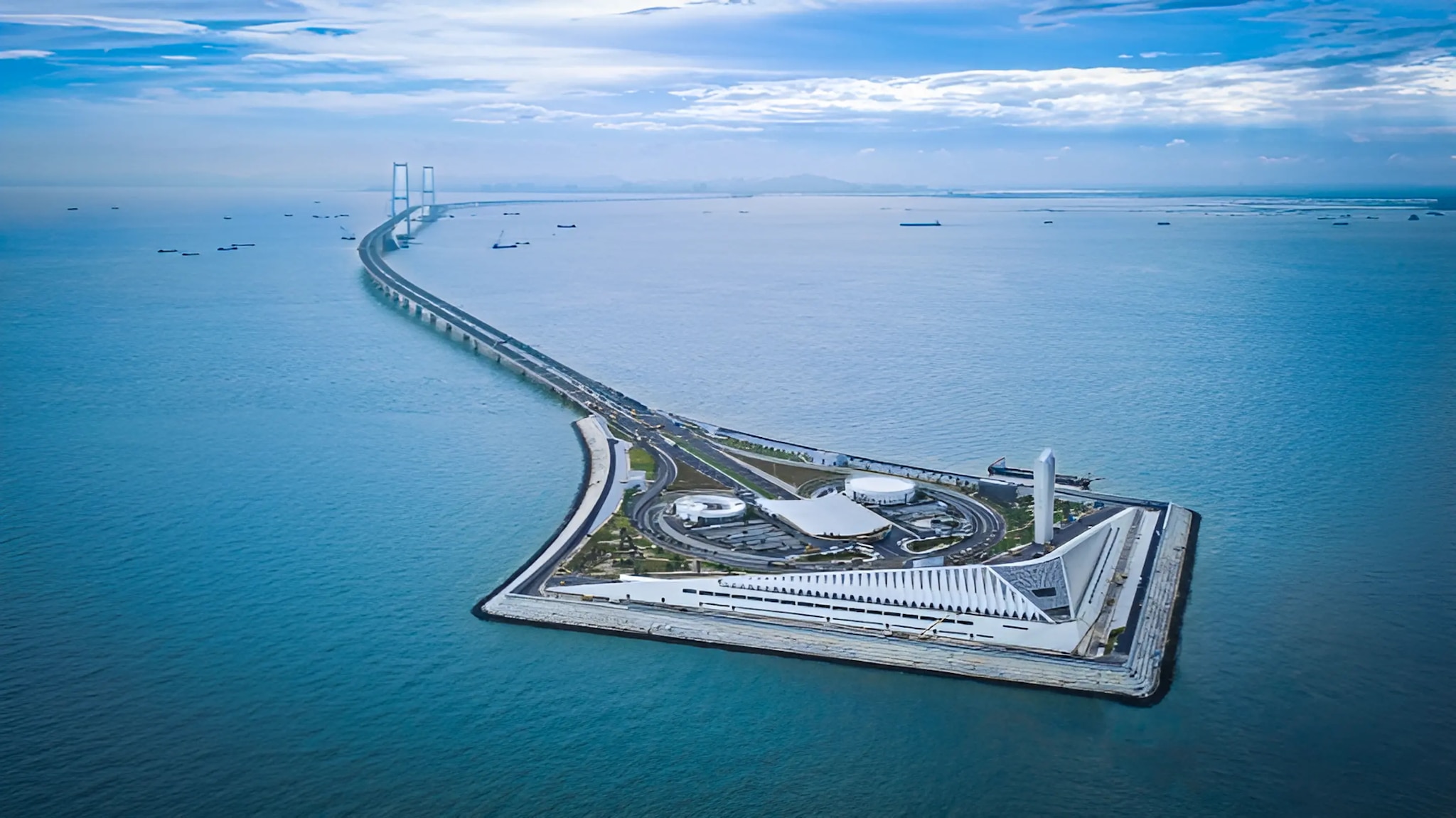After seven years of work, the new Shenzhen-Zhongshan Link has finally been inaugurated. The two cities are located on opposite shores of the Pearl River estuary in the South China Sea, and the link joins the Hong Kong-Zhuhai-Macau Bridge – the longest sea-crossing bridge in the world. This is one of the most densely populated areas in the world, also encompassing Hong Kong, Macao, and nine other cities in Guangdong, separated by wide bodies of water that make travel very difficult.
The new 24-kilometer system appears – at least according to China Global Television Network (CGTN) – to have secured ten world records, which are very specific and technical. It is not a single bridge, but rather a central underwater tunnel running between two artificial islands, with bridges connecting each island to the city on that side. With its eight lanes, this new infrastructure would reduce a two-hour journey to just thirty minutes. In addition to structural records, it is worth highlighting the technological innovation for safety, with new firefighting and smoke evacuation systems and a team of 14 robots constantly patrolling the structure, monitoring pipes, cables, and any road incidents. The lighting features color-coded systems: when all is well, they are green, but in case of emergency, they turn red and are designed to guide people during evacuation.
Here are the new records it sets:
- the largest span for a fully offshore steel box girder suspension bridge (1,666 m/5,466 ft),
- highest bridge deck (91 m/299 ft),
- highest navigation clearance for a sea bridge,
- largest offshore suspension bridge anchor (344,000 m3 /12 million cubic ft of concrete),
- highest wind resistance test speed for a suspension bridge (83.7 m/273.6 ft per second),
- largest steel bridge deck with hot-mix epoxy asphalt paving (378,800 m2 /4 million sq ft),
- longest two-way, eight-lane immersed tube tunnel (5,035 m/16,519 ft),
- widest underwater steel shell-concrete immersed tube tunnel (up to 55.6 m/182.4 ft),
- largest single-volume cast for a steel-shell immersed tube using self-compacting concrete (29,000 m3 /1 million cubic ft per tube section),
- widest repeatedly foldable M-shaped water stop used in the final joint of an immersed tube tunnel (3 m/9.8 ft).
Opening image: Courtesy Xinhua.

FADE Family is the new approach to outdoor living
The latest addition to the PLUST Collection is a line of furniture inspired by the texture of white stone, which illuminates as evening falls.










